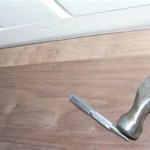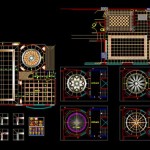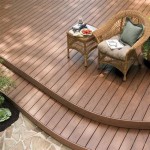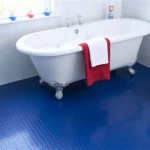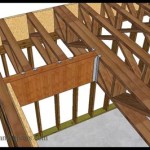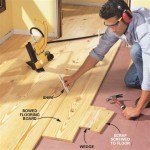Luxury Vinyl Flooring vs. Engineered Wood: Which Is Better For Your Living Room?
Choosing the right flooring for a living room is a significant decision, impacting both the aesthetic appeal and the functionality of the space. Two popular choices for homeowners are luxury vinyl flooring (LVF) and engineered wood. Both offer distinct advantages and disadvantages, making the selection process potentially complex. This article aims to provide a comprehensive comparison of these two flooring options, focusing on key factors such as durability, aesthetics, cost, maintenance, and environmental impact, to aid in making an informed decision tailored to individual needs and preferences.
Before diving into a direct comparison, it's important to understand the fundamental differences between LVF and engineered wood. Luxury vinyl flooring is a synthetic material composed of multiple layers, typically including a wear layer, a printed design layer, and a core layer. These layers are often fused together, providing a durable and water-resistant surface. Engineered wood, on the other hand, consists of a thin veneer of real hardwood bonded to a core of plywood or high-density fiberboard (HDF). This construction provides dimensional stability, reducing the likelihood of warping or buckling compared to solid hardwood.
Durability and Resistance to Wear
Durability is a crucial consideration for any living room flooring, as this space typically experiences high foot traffic and is subject to various forms of wear and tear. Luxury vinyl flooring is known for its exceptional durability. The top wear layer, often made of polyurethane, protects the flooring from scratches, stains, and fading. Higher-quality LVF products feature thicker wear layers, offering enhanced protection in high-traffic areas. LVF is generally resistant to water damage, making it a suitable choice for homes with pets or young children where spills are common. Some LVF products are even completely waterproof.
Engineered wood, while durable, is more susceptible to damage than LVF. The hardwood veneer, though offering the visual appeal of solid wood, can be scratched, dented, and stained. The thickness of the veneer plays a significant role in its durability; thicker veneers allow for more refinishing over the lifespan of the floor. Engineered wood is also vulnerable to water damage. While some engineered wood products are treated to increase water resistance, prolonged exposure to moisture can cause warping, swelling, and delamination. Therefore, engineered wood is generally not recommended for areas prone to high humidity or spills.
The resistance to everyday wear and tear significantly favors luxury vinyl flooring. Its inherent resilience makes it a practical choice for busy households seeking a low-maintenance and long-lasting flooring solution. However, it's important to note that the durability of both LVF and engineered wood can vary depending on the quality of the product and the manufacturer's specifications.
Aesthetics and Design Options
The aesthetic appeal of a living room floor is paramount, as it significantly contributes to the overall ambiance and style of the space. Engineered wood offers the authentic look and feel of real hardwood. The natural grain patterns, variations in color, and textures provide a warmth and richness that is difficult to replicate with synthetic materials. Engineered wood is available in a wide range of wood species, from traditional oak and maple to more exotic options like bamboo and acacia, allowing homeowners to achieve a desired aesthetic.
Luxury vinyl flooring has made significant strides in recent years in replicating the appearance of natural materials. Advanced printing technologies and embossing techniques allow LVF to mimic the look of wood, stone, and tile with remarkable accuracy. While LVF can convincingly imitate the appearance of hardwood, it often lacks the depth and natural variations found in real wood. However, LVF offers a vast array of design options, including various wood species, colors, patterns, and textures, providing homeowners with considerable flexibility in achieving a desired look. Some LVF products even feature textured surfaces that further enhance the realism of the imitation.
The choice between LVF and engineered wood in terms of aesthetics often comes down to personal preference and budget. Engineered wood offers the authentic beauty of real hardwood, while LVF provides a wider range of design options and a more budget-friendly alternative. The visual advancements in LVF technology have narrowed the gap between the two, making it increasingly difficult to distinguish between high-quality LVF and real wood without close examination.
Cost and Installation
The cost of flooring encompasses not only the material itself but also the cost of installation. Luxury vinyl flooring typically has a lower upfront cost compared to engineered wood. The price of LVF varies depending on the quality, thickness, and design, but generally, it is a more affordable option. Furthermore, LVF is often easier to install than engineered wood, potentially reducing installation costs. Many LVF products are designed with click-lock systems, allowing for a relatively simple DIY installation. Glue-down LVF options may require professional installation for a flawless finish.
Engineered wood tends to be more expensive than LVF, reflecting the cost of the hardwood veneer and the more complex manufacturing process. The installation of engineered wood can also be more labor-intensive, particularly for nail-down or glue-down installations. While some engineered wood products are designed with click-lock systems, professional installation is often recommended to ensure proper alignment and a secure fit. The cost of installation can vary depending on the complexity of the project, the size of the room, and the skill of the installer.
When considering cost, it's important to factor in the long-term value of the flooring. While LVF may have a lower initial cost, engineered wood can potentially increase the resale value of a home. However, the durability and low maintenance requirements of LVF can offset the higher initial cost of engineered wood over the lifespan of the flooring.
Maintenance and Cleaning
The ease of maintenance is a significant factor to consider when choosing living room flooring. Luxury vinyl flooring is exceptionally easy to maintain. Its waterproof surface resists spills and stains, making cleanup a breeze. Regular sweeping or vacuuming is sufficient to remove dirt and debris. For more thorough cleaning, a damp mop with a mild detergent can be used. LVF does not require special waxes or polishes, further simplifying the maintenance process.
Engineered wood requires more care and attention than LVF. While a protective finish can help to prevent stains and scratches, engineered wood is still susceptible to damage from water and excessive moisture. Spills should be cleaned up immediately to prevent warping or staining. Regular sweeping or vacuuming is necessary to remove dirt and debris. When mopping, it's important to use a slightly damp mop and a cleaner specifically designed for hardwood floors. Avoid excessive moisture, as it can damage the wood veneer. Depending on the finish, engineered wood may require periodic refinishing to restore its luster and protect the surface.
The low-maintenance nature of LVF makes it an appealing option for busy homeowners who want a durable and easy-to-clean flooring solution. Engineered wood, while offering the beauty of real hardwood, requires more diligence in terms of maintenance and cleaning to preserve its appearance and longevity.
Environmental Impact
The environmental impact of flooring choices is an increasingly important consideration for environmentally conscious homeowners. Luxury vinyl flooring is a synthetic material made from polyvinyl chloride (PVC), a plastic polymer. The production of PVC can be resource-intensive and may involve the use of potentially harmful chemicals. However, some manufacturers are now offering LVF products made from recycled materials or bio-based polymers, reducing the environmental impact. The durability and long lifespan of LVF can also contribute to its sustainability, as it reduces the need for frequent replacement.
Engineered wood utilizes real wood, a renewable resource, but its production also raises environmental concerns. Deforestation and unsustainable logging practices can have detrimental effects on ecosystems. However, engineered wood products that are certified by organizations like the Forest Stewardship Council (FSC) ensure that the wood is sourced from responsibly managed forests. The use of plywood or HDF in the core of engineered wood also requires adhesives, which may contain volatile organic compounds (VOCs) that can contribute to indoor air pollution. Look for engineered wood products with low-VOC certifications to minimize these emissions.
The environmental impact of both LVF and engineered wood can vary depending on the specific product and the manufacturer's practices. Choosing products with recycled content, sustainable sourcing certifications, and low-VOC emissions can help to minimize the environmental footprint of the flooring choice.
Key Considerations Summary
In summary, the choice between luxury vinyl flooring and engineered wood for a living room hinges on a variety of factors. LVF excels in durability, water resistance, and ease of maintenance, offering a cost-effective and practical solution. Engineered wood provides the authentic beauty of real hardwood but requires more care and attention. The aesthetic appeal, budget, and environmental concerns all play a crucial role in the decision-making process. Evaluating these factors in light of individual needs and preferences will ultimately lead to the most suitable flooring selection for the living room.

Boosting Re Value Luxury Vinyl Plank Vs Engineered Hardwood Floor Refinishing Services In Highland Park Plus Flooring
:max_bytes(150000):strip_icc()/SPR-lvp-vs-engineered-hardwood-8401038-hero-d7dc36cd86194378987555bc491d03ec.jpg?strip=all)
Lvp Vs Engineered Hardwood What S The Difference

Engineered Wood Vs Vinyl Plank A No Nonsense Comparison And Beyond Blog

Installing Luxury Vinyl Floors Over Engineered Hardwood Honey Built Home
House Digest Interview Luxury Vinyl Plank Or Engineered Hardwood

Luxury Vinyl Tile Vs Hardwood Flooring

What Is The Best Flooring For A Living Room Tarkett

Engineered Wood Vs Vinyl Plank Flooring Which One To Pick Déco Surfaces

Engineered Wood Flooring Vs Diffe Types Hardwoodfloor

Hardwood Vs Luxury Vinyl Plank Flooring The Creative Kitchen Co



